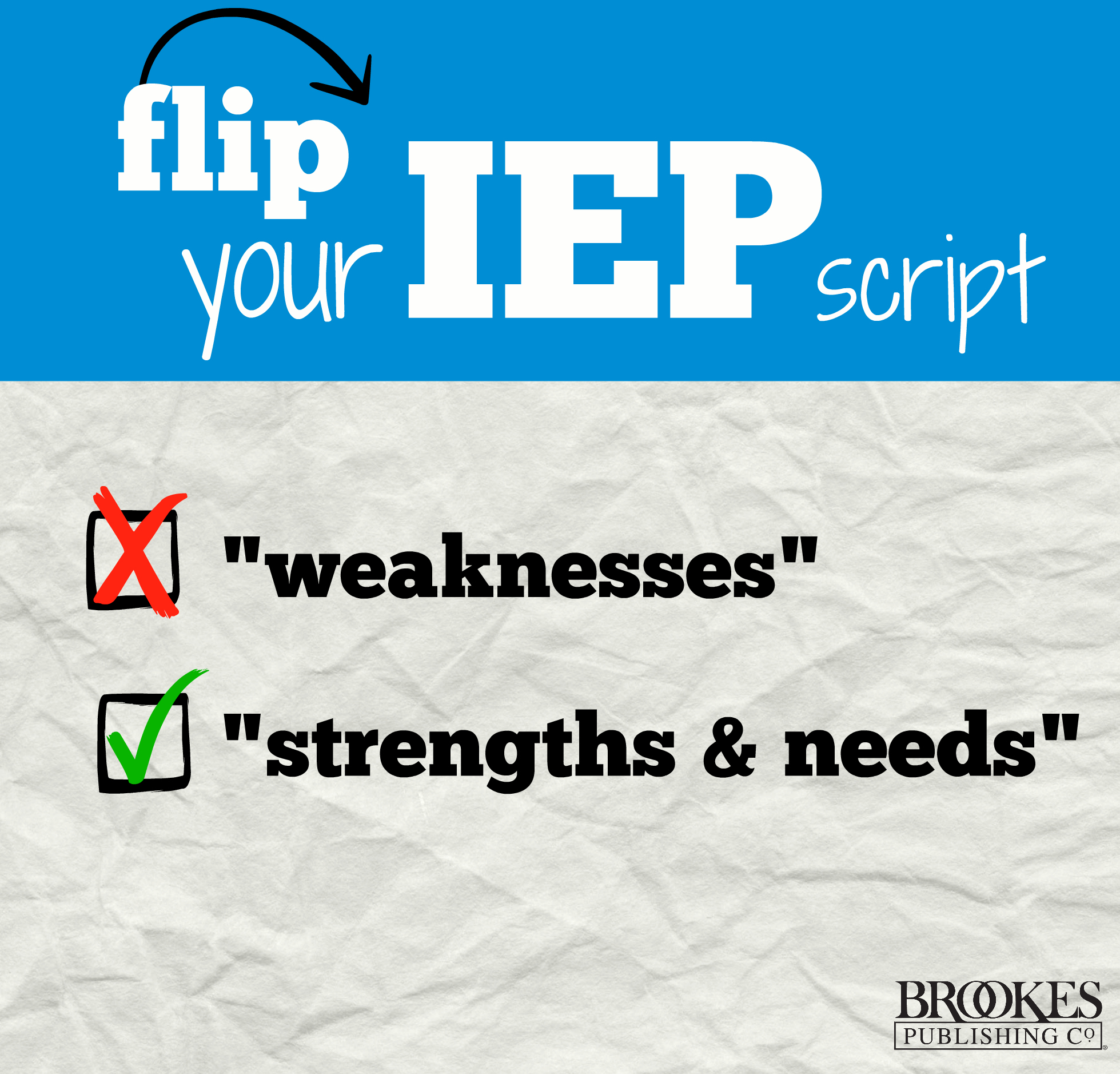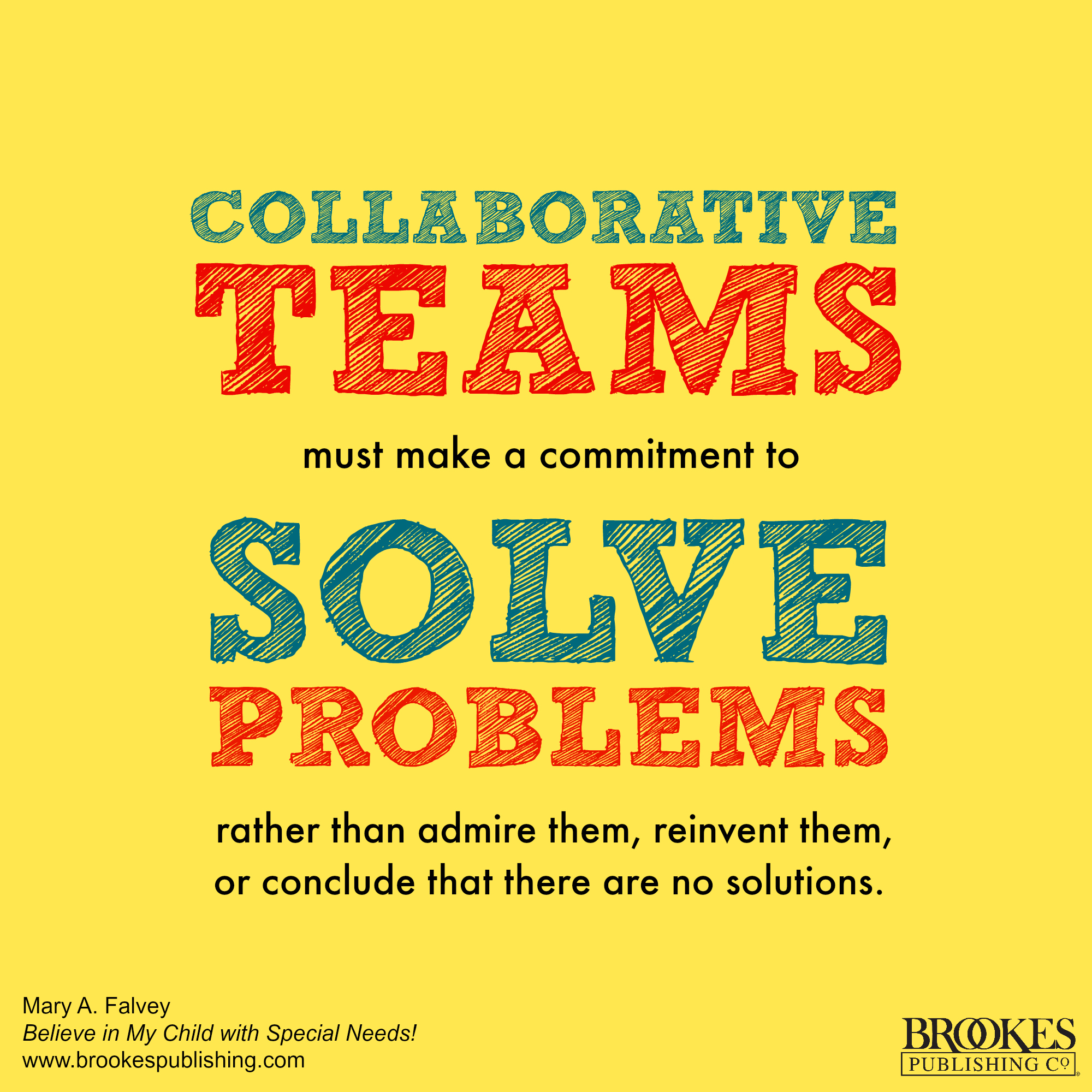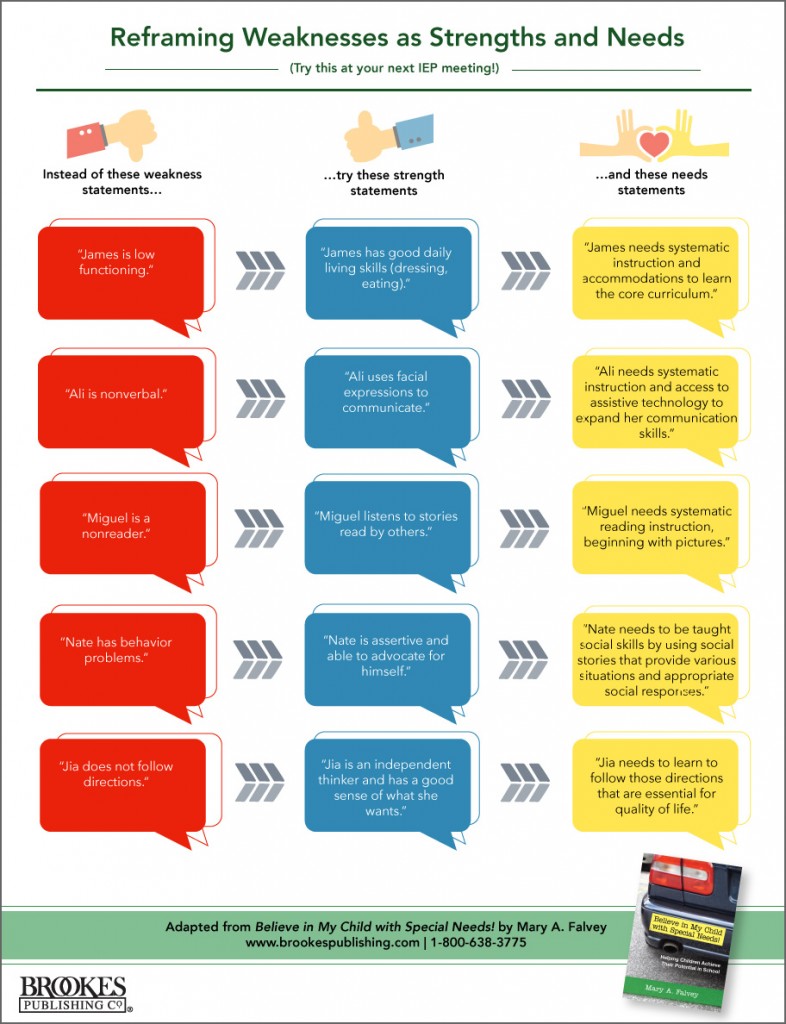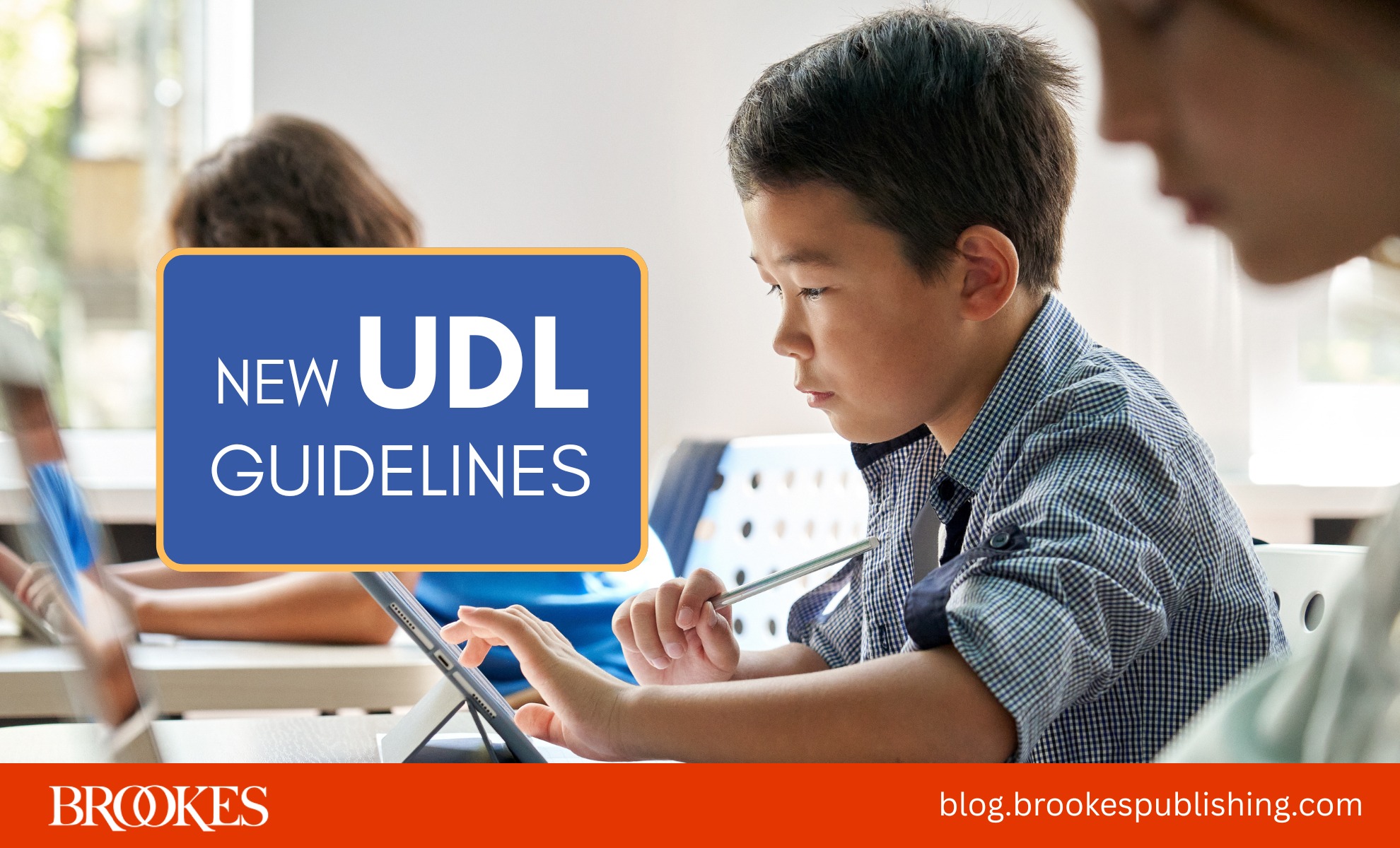IEP QuickTips: Reframing Weaknesses as Strengths and Needs
July 16, 2015
Today’s tips are for: All members of IEP teams for students in grades K-12
The challenge: Starting the process of figuring out how to support a student’s learning
When you sit down with an IEP team to start the planning process, it can be tempting to start with what a student can’t do: She can’t read yet. He can’t follow the teacher’s directions. But as Mary Falvey points out in her book Believe in My Child with Special Needs!, taking a problem-focused approach defeats your goal of high expectations and creative problem-solving. Falvey notes,
“Statements that focus on the student’s weakness often result in IEPs of low or no expectations. Collaborative [IEP] teams must make a commitment to solve problems rather than admire them, reinvent them, or conclude that there are no solutions.”
(Like that quote? I prettied it up a little if you want to share it:)
It’s true–getting “stuck” on a student’s challenges can make it tough to move forward with an effective IEP that meets his or her needs. Give this a try instead: flip those immobilizing “weakness statements” into specific strengths and needs statements that point the way toward solutions.
This graphic gives you 5 great examples of what that sounds like (just give it a click to see it full size):
What do you think? Do you consciously try to flip weakness statements into strengths and needs statements during IEP meetings? What are some other ways to avoid getting stuck on what a student can’t do yet? Tell us in the comments!
MORE IEP POSTS
9 First Steps to Student-Directed IEPs
How to Be an A-Plus IEP Leader
Who’s at the IEP Table? A Quick Guide to Roles and Responsibilities
EXPLORE THE BOOK
 Check out Mary Falvey’s book, a great resource to share with parents, especially. It’ll help them:
Check out Mary Falvey’s book, a great resource to share with parents, especially. It’ll help them:
- understand their child’s legal rights
- pursue an inclusive education for their child, from preschool to high school and beyond
- collaborate with educators on their child’s IEP
- promote their child’s access to the general curriculum
- support their child as he or she develops friendships
- and more






Write a Comment
Your email address will not be published. Required fields are marked *
comments
Alexa says
THANK YOU for focusing the conversation on strengths and needs vs. weaknesses and deficits!!!!
It's easy to let the IEP process become a deficit-driven conversation. One of the things that I've /really/ tried to emphasize as a Special Ed teacher is that we're trying to capitalize on a student's strengths to address their needs/areas for growth.
I will be using these infographics in my IEP meetings/disability disclosure lessons!
jlillis says
Thanks, Alexa! We're so glad this post was helpful and resonated with you.
Post a Comment